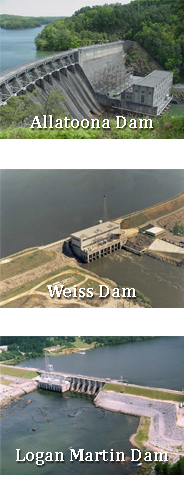
 Mr. Jaime A. Pinkham, Acting Assistant Secretary of the Army for Civil Works, signed the Record of Decision (ROD) for the Supplemental Environmental Impact Statement (SEIS) on August 27, 2021, which allows for the approval of the updated Water Control Manuals for the Alabama-Coosa-Tallapoosa River Basin. Brigadier General Jason Kelly, Commander South Atlantic Division, U.S. Army Corps of Engineers, approved the Water Control Manuals for the Alabama-Coosa-Tallapoosa River Basin on May 5, 2022. The signature by the South Atlantic Division Commander signifies that the impacts of the water control manual update, as presented in the SEIS, are in compliance with pertinent laws, executive orders, and regulations and have been fully considered in making the decision.
Mr. Jaime A. Pinkham, Acting Assistant Secretary of the Army for Civil Works, signed the Record of Decision (ROD) for the Supplemental Environmental Impact Statement (SEIS) on August 27, 2021, which allows for the approval of the updated Water Control Manuals for the Alabama-Coosa-Tallapoosa River Basin. Brigadier General Jason Kelly, Commander South Atlantic Division, U.S. Army Corps of Engineers, approved the Water Control Manuals for the Alabama-Coosa-Tallapoosa River Basin on May 5, 2022. The signature by the South Atlantic Division Commander signifies that the impacts of the water control manual update, as presented in the SEIS, are in compliance with pertinent laws, executive orders, and regulations and have been fully considered in making the decision.
The U.S. Army Corps of Engineers (USACE), Mobile District released the Allatoona-Coosa Reallocation Feasibility Report (FR) and for Final National Environmental Policy Act (NEPA) Review on November 20, 2020. The review and comment period ended on January 25, 2021.
The Mobile District has prepared this NEPA compliant FR/SEIS to: 1) evaluate the 2018 water supply storage request from the State of Georgia seeking to reallocate water storage out of Allatoona Lake, 2) evaluate the proposed revised flood operations at two Alabama Power Company (APC) owned projects -- Weiss and Logan Martin Reservoirs; and 3) update any Water Control Manuals (WCMs), as necessary, as a result of changes in operations in the Alabama-Coosa-Tallapoosa (ACT) River Basin located in Alabama and Georgia.
The updated plans and manuals comply with existing Corps of Engineers regulations and reflect operations under existing congressional authorizations, taking into account changes in basin hydrology and demands from years of growth and development, new/rehabilitated structural features, legal developments, and environmental issues. Corps regulations also provide specific policy and guidance for inclusion of drought contingency plans as part of the Corps of Engineers' overall water control management activities.
Water Control Manuals outline the regulation schedules for each project and specifications for storage and releases from each reservoir. Water Control Manuals outline policies and data protocols for flood risk management operations and drought contingency operations. Updated Water Control Manuals are needed to enable managers to strike the best balance possible for the many purposes and demands. A complex set of factors is needed to determine appropriate water management at each lake. In addition to the authorized project purposes, power contract commitments, hydrologic and climatologic factors, downstream lake and basin-wide conditions, potential threats of flood and drought, and lake levels are all be considered.